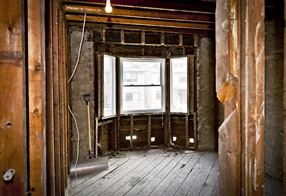 If you are thinking about taking up house-flipping, there are 5 key concepts you need to know like the back of your hand. House flipping is a lot of work, but if you're up for it and you do it right you can make some good money. You just need to be smart, have a good business plan, and stick to it. Emotions are not valid here . . . if a project does not fit into the financial framework, then pass on it. You're doing this to make money, right.
If you are thinking about taking up house-flipping, there are 5 key concepts you need to know like the back of your hand. House flipping is a lot of work, but if you're up for it and you do it right you can make some good money. You just need to be smart, have a good business plan, and stick to it. Emotions are not valid here . . . if a project does not fit into the financial framework, then pass on it. You're doing this to make money, right.
#1 KNOW YOUR FINANCES
Determine what you can spend on both the house and the renovation, down to the last dollar. Price out the cost of carrying a short-term loan (if you need one), taxes, utilities and maintenance on the home for about 6-12 months, depending on how long the renovation will take, and the average time it takes to sell a property in that community and that price range. Price out the cost of materials and labor.
Study all the comparable sales in the same neighborhood and price range, to determine what the likely sales price will be. If you can't make the money/return that you expect, then pass on the house. Remember that there are often unforeseen issues that can add to the cost, and if you are running tight on the front end, it could lead to a disappointing financial result when you sell.
#2 BECOME A MARKET EXPERT
Location . . . location . . . location is as relevant today as it always was. It is #1. So, taking the time to familiarize yourself with the neighborhood of the prospective property is a make or break rule. Is it an established area with rising prices? Is it a transitional neighborhood with good potential? Are the schools good and do they attract young families? Educate yourself on all recent sales and average time to sell. Knowing the market will help you develop your strategy.
#3 KNOW THE LIKELY BUYER
Based on the neighborhood, who is your buyer? Is it a great place for retirees with smallish one-story homes on small lots? Is the area known for its good schools, and is your likely buyer a young family? Is it in a more urban area within close proximity to restaurants and entertainment venues, which would appeal to young singles and business professionals?
Once you've determined who your likely buyer is, then plan your renovation around what that buyer wants in a home. Pretty much everybody wants the open concept kitchen/dining/family, so opening up an old-house chopped up floor plan is a must. Retirees often want maintenance free everything, very few stairs, senior-friendly fixtures, and a nice area for their children and grandchildren to stay. For young families, having an open floor plan with enough bedrooms and baths for everyone, a finished basement, and a nice outdoor family gather place are all important. The urban buyer wants the lifestyle afforded by being able to walk and bike to their favorite places. They like cool finishes and minimalist design, energy efficient and smart home features, and a combination of old and new, so you can have some fun with a few unique features (but not too pricey).
#4 SHOW OFF YOUR WORK
Make a detailed list of everything you did. Keep a daily journal of the work so you don't miss anything. Take photos of the renovation-in-progress and photograph every room in detail, as well as all exterior improvements. Prepare a binder with all the new appliances and fixtures instruction booklets and warranties to give to the buyer. Display instructions next to any new "smart home" features, like security, sound system and lighting controls. Let buyers know every detail of how the home has been updated.
#5 PRICE THE PROPERTY TO SELL
Remember . . . don't make any emotional decisions. After doing all that work and loving the finished product, it may be tempting to overprice the home. Don't do it! There are so many reasons to price your home right . . . and the biggest reason is that when you price the property at its market value it will sell quickly and bring you the highest price. That's exactly what you want to happen. Your best market time is the first few weeks. Don't blow it with a price that's wrong. Every neighborhood has a general price point, and you need to stay within it. Read more on Pricing Your Property To Sell
Oh, and one more thing . . . never show the house before it's buyer-ready, even if they are begging you to see it. We have seen this mistake made way too many times. Don't assume the buyer can imagine the property when the work is done. They can't. Showing the house before its ready is the best way to lose what may have been your best buyer.
Happy house flipping!

